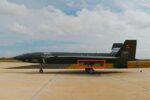Danish defense firm SH Defence has secured a contract to deliver its Cube modular mission module system to the United States Coast Guard (USCG), marking a significant milestone in the adoption of flexible mission payloads by U.S. maritime forces. The deal supports the USCG’s shift toward enhanced multi-mission capabilities across its fleet of cutters through containerized systems that can be rapidly swapped and reconfigured.
Contract Overview and Strategic Context
Announced in September 2025 by SH Defence and confirmed by Naval News and other defense outlets, the agreement involves supplying Cube-ready mission modules as part of an ongoing modernization effort for USCG vessels—particularly those in the Offshore Patrol Cutter (OPC) program. While financial terms were not disclosed publicly, the contract is understood to include both hardware delivery and technical support for integration.
The move aligns with broader Department of Homeland Security (DHS) priorities emphasizing operational flexibility and cost-effective upgrades via commercial-off-the-shelf (COTS) technologies. The USCG’s interest in modular payloads reflects lessons learned from NATO allies and recent U.S. Navy experimentation with containerized systems aboard expeditionary platforms.
The Cube System: Design Philosophy and Capabilities
SH Defence’s “The Cube” is a standardized modular interface system designed to enable rapid deployment of mission-specific equipment on naval vessels using ISO container dimensions (typically 10 or 20 feet). The core innovation lies in its mechanical handling system—the Cube Ready Rack—which allows cranes or automated systems to load/unload modules without permanent structural modifications to the ship.
Cube modules can host a wide range of payloads including:
- Mine countermeasures (MCM) equipment such as side-scan sonar or AUV launch/recovery systems
- Unmanned surface/underwater vehicle control stations
- C4ISR suites including EO/IR sensors, radar processing nodes, or satellite comms terminals
- Medical facilities or disaster relief support kits
- Weapon stations including remote weapon systems (RWS) or even vertical launch cells on larger platforms
The system has already been adopted by several NATO navies including Denmark’s Royal Navy under its StanFlex-inspired approach. SH Defence claims over 300 module types are currently available within its ecosystem.
U.S. Coast Guard Modernization Goals
The USCG is undergoing one of its most ambitious recapitalization efforts in decades. Central to this is the Offshore Patrol Cutter program led by Eastern Shipbuilding Group, which aims to replace aging Medium Endurance Cutters with ships capable of extended blue-water operations while retaining flexibility for homeland security missions.
The integration of modular systems like The Cube aligns with key USCG goals:
- Multi-Mission Adaptability: From drug interdiction to search-and-rescue (SAR), cutters must pivot between roles quickly without lengthy refits.
- Crisis Response: Containerized medical or disaster relief capabilities allow rapid deployment during hurricanes or humanitarian crises.
- Unmanned Integration: As UAVs/UUVs become more central to maritime ops, ships must accommodate their control/storage infrastructure without redesigning hulls.
This modularity also supports interoperability with allied navies using similar standards—an increasingly important factor given joint operations in contested maritime zones like the Arctic or Indo-Pacific regions.
NATO Trends Toward Modularity and Interoperability
The U.S. Coast Guard’s adoption of The Cube reflects broader NATO trends toward plug-and-play naval architectures that reduce lifecycle costs while enhancing responsiveness. Denmark pioneered this approach with its StanFlex system in the late 1990s; today countries like Germany, Netherlands, Norway, and Canada are exploring similar concepts through programs such as MKS-180 and Joint Support Ship initiatives.
The appeal lies in several factors:
- Sustainability: Modules can be upgraded independently from hull platforms over decades-long service lives.
- Scalability: Smaller navies can field advanced capabilities using leased/shared modules rather than bespoke warships for each role.
- Tactical Surprise: Swapping out mission loads shortly before deployment complicates adversary targeting assumptions.
This philosophy dovetails with emerging concepts like Distributed Maritime Operations (DMO) where survivability depends on dispersal and adaptability rather than concentrated firepower alone.
Technical Integration Challenges Ahead
While promising on paper, integrating modular payloads into legacy fleets presents non-trivial challenges—especially for a service like the USCG whose vessels were not originally designed around containerized architecture. Key hurdles include:
- Cabling & Power Interfaces: Ensuring sufficient electrical supply and data connectivity between shipboard networks and temporary modules requires careful planning.
- Securitization & Cyber Hardening: COTS-based containers must meet military-grade cybersecurity standards before connecting into command networks.
- Crew Training & Doctrine Shifts: Operators must be trained not only on module use but also on logistics workflows for embarkation/disembarkation at sea or port facilities.
Ahead of full-scale deployment aboard OPC hulls post-2026, it is likely that prototype testing will occur aboard National Security Cutters (NSCs) or Fast Response Cutters (FRCs), potentially at test ranges such as Joint Expeditionary Base Little Creek-Fort Story or Naval Station Mayport where joint experimentation occurs regularly between services.
A Danish Footprint in North American Defense Markets
This contract marks a notable expansion for SH Defence into North America—a market traditionally dominated by domestic primes such as Lockheed Martin or Huntington Ingalls Industries. While still limited in scope compared to large combatant programs, it reflects growing openness within U.S. acquisition channels toward foreign-developed niche technologies when they offer clear operational advantages without major platform redesigns.
Danish firms have previously contributed components such as Terma’s SCANTER radars aboard U.S.-allied ships; this latest deal may pave the way for further European participation in auxiliary vessel upgrades across DHS and DoD portfolios alike—particularly where speed-to-field is prioritized over bespoke development timelines typical of major acquisition programs under FAR/DFARS constraints.
Outlook: Toward Modular Maritime Forces?
If successful within USCG applications, The Cube could see expanded use across other U.S.-flagged fleets including Military Sealift Command vessels tasked with logistics support or even Navy auxiliary platforms supporting unmanned experimentation under Task Force 59 initiatives. Its ISO-standard footprint makes it inherently compatible with sealift assets already equipped for container handling operations worldwide.
The next two years will be critical as integration trials validate whether European-style modularity can scale effectively within American operational contexts marked by different threat profiles and bureaucratic structures. For now, SH Defence’s entry into this space underscores how allied innovation continues shaping future force design—even beyond traditional defense-industrial boundaries.








